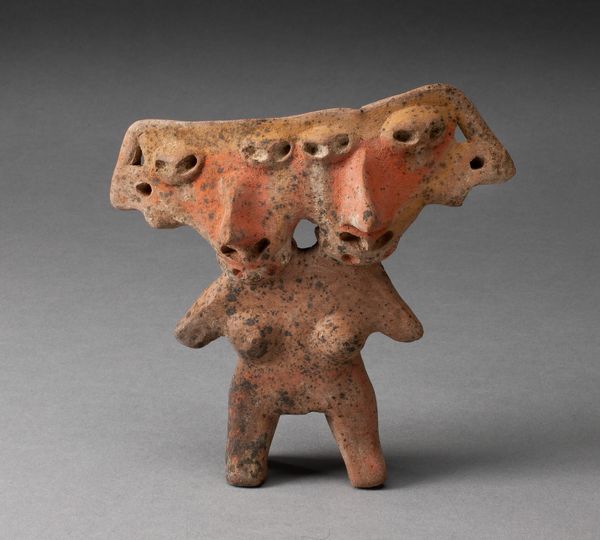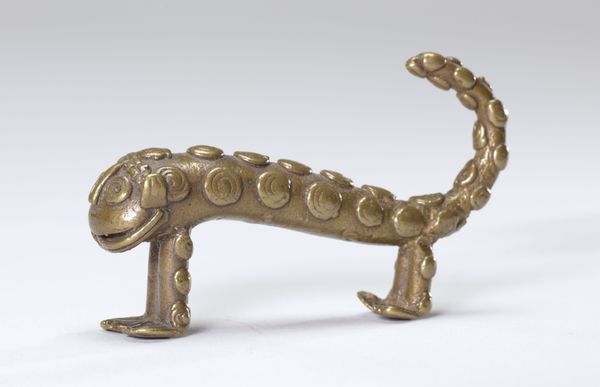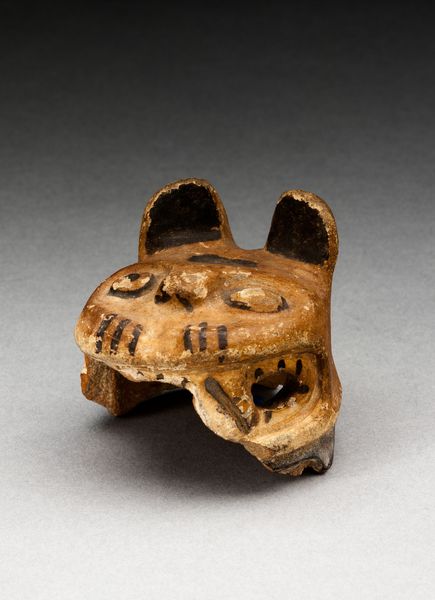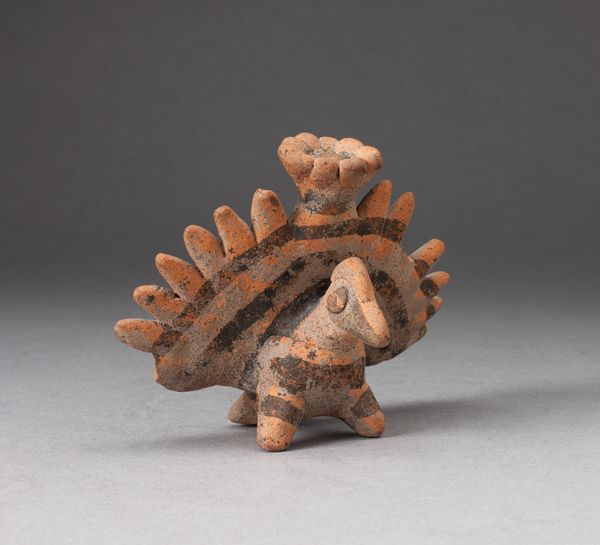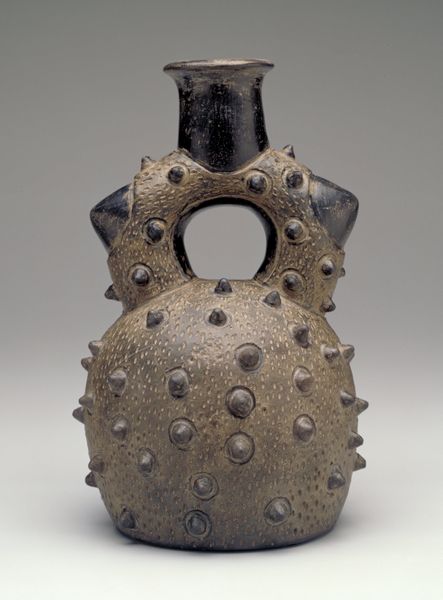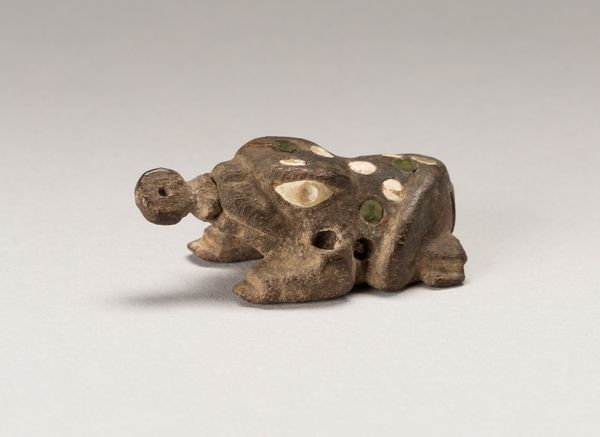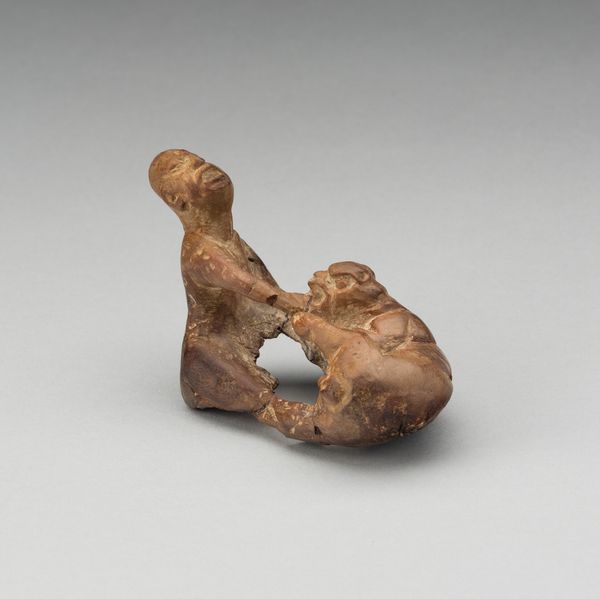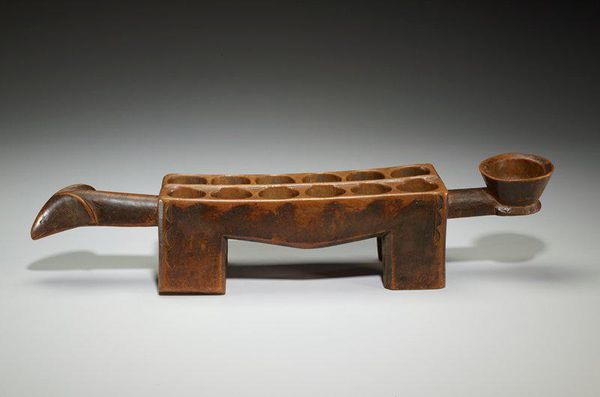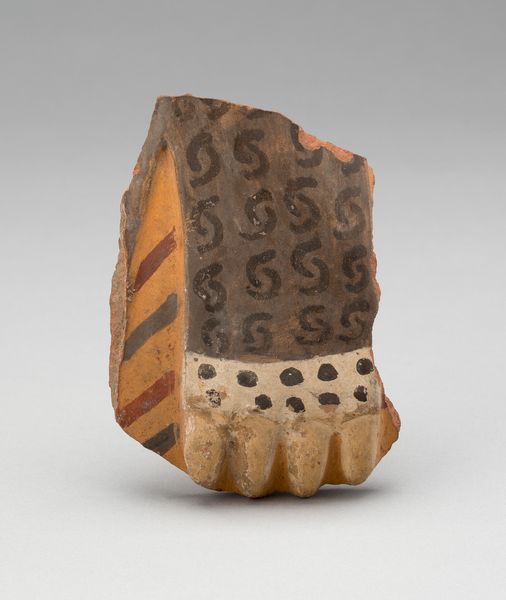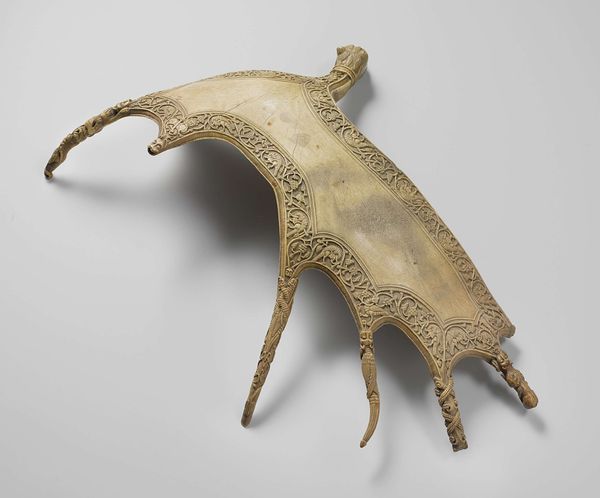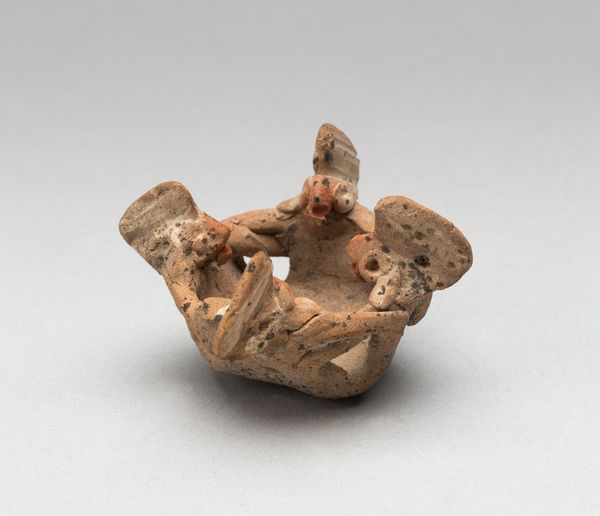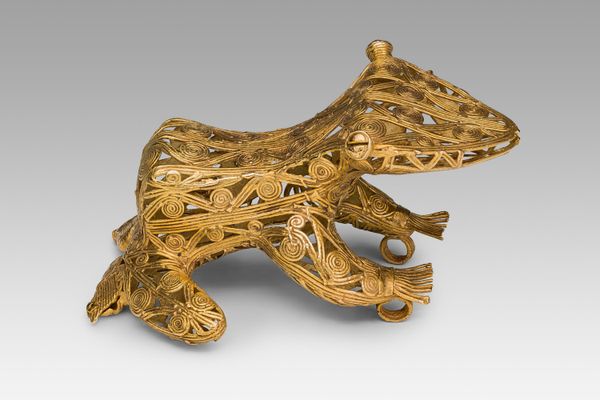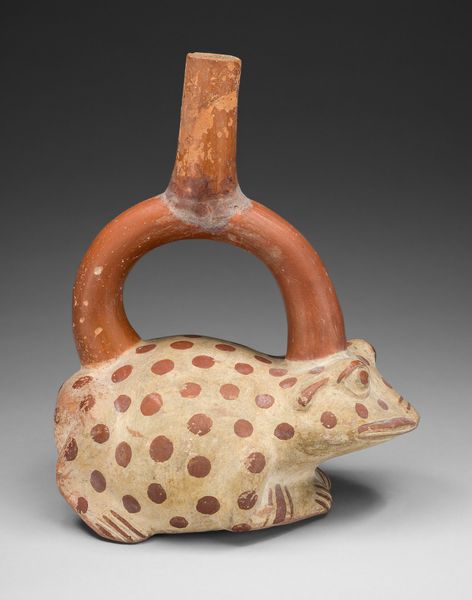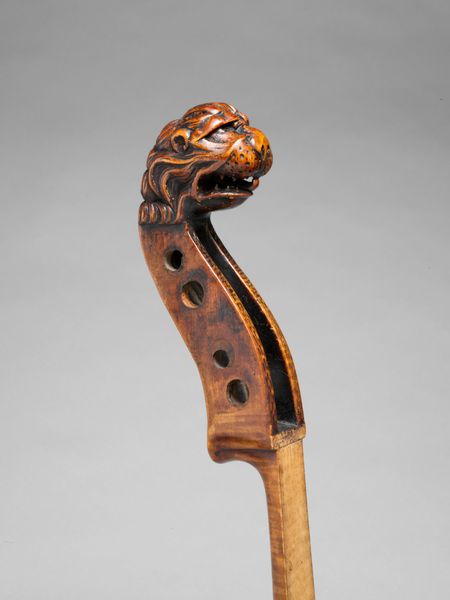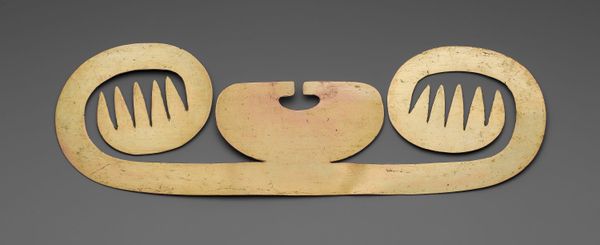
Pendant in the Form of a Mythical Double-Headed Creature c. 200
0:00
0:00
carving, sculpture
#
carving
#
figuration
#
sculpture
#
indigenous-americas
Dimensions: Main pendant: 6.4 × 17.8 cm (2 1/2 × 7 in.); side pendants: 6.4 × 3.2 cm (2 1/2 × 1 1/2 in.); center pendant: 5.1 × 3.2 cm (2 × 1 1/4 in.)
Copyright: Public Domain
Curator: This delicate ivory carving, a pendant from the Colima culture dating back to approximately 200, is fashioned into a mythical double-headed creature. Editor: There's an undeniable air of solemnity to this piece. Its symmetrical composition, paired with that creamy, almost bone-like material, speaks to ritual and tradition, even before we know its purpose. Curator: Indeed. Consider that double-headed creatures in many ancient cultures, not just in the Americas, often signify duality and balance—a harmonious connection between opposing forces. One could think of the human and the animal, or perhaps life and death, reconciled. Editor: Absolutely. And placed within the Colima context, where animal representation frequently links to shamanic practices and the spirit world, I wonder if this piece speaks to transformation? Maybe a symbolic embodiment of shapeshifting? This imagery feels potent and tied to societal roles. Curator: That's a fascinating point, given the perforations; you see that careful lattice-work? These could suggest an opening, or pathway, between the material and spiritual realms. Ivory, as a material linked to large, respected creatures, elevates that reading, as ivory was a precious, costly item. The scale makes it an object meant to adorn a body, very personal. Editor: Knowing it's a pendant changes my understanding entirely. This object wouldn't just be a symbol, it'd be carried, felt, an intimate extension of identity. But was this accessible to all members of the society or was it only for elite, religious specialists or leaders? It forces you to ponder these power dynamics embedded within its display. Curator: Undoubtedly. The creature’s specific iconography is difficult to precisely pin down so many years removed, which can also be fascinating. We are given just these visual fragments, which, because of their place in the culture of Colima, held enormous meaning for the carrier. Editor: It does offer a rare glimpse into a worldview far removed from our own, bridging past and present through tactile form and symbolism. What survives tells many tales of what disappeared. Curator: Yes. It sparks reflection on the complex symbolic landscapes crafted by societies so different from ours, yet undeniably human in their quest for meaning. Editor: Ultimately it underscores the power of art to serve as both cultural marker and potent reminder of worlds both lost and living.
Comments
No comments
Be the first to comment and join the conversation on the ultimate creative platform.
